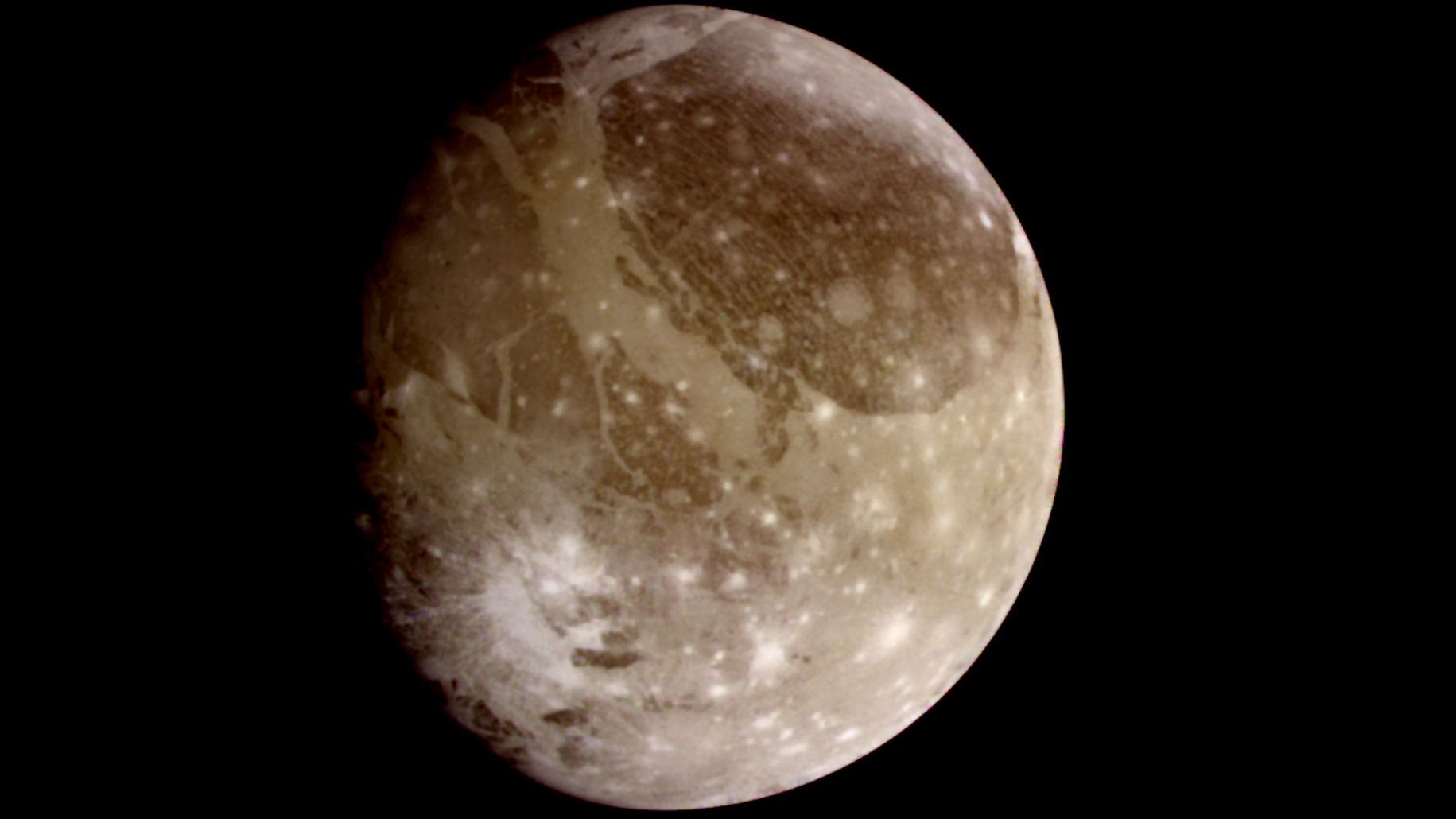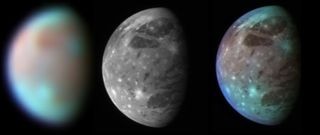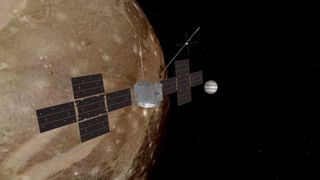Ganymede, Jupiter’s largest moon, is a colossal celestial body that dwarfs our own moon. Just how much bigger is it? This article delves into Ganymede’s size, comparing it to Earth’s moon and exploring other fascinating facts about this icy giant.
Ganymede’s sheer size makes it a standout in our solar system. It’s larger than the planet Mercury and the dwarf planet Pluto, and only slightly smaller than Mars. This massive moon boasts a mean radius of 1,635 miles (2,631.2 km), significantly larger than our moon’s radius of 1,079.6 miles (1,737.4 km). In terms of volume, Ganymede is a staggering 3.5 times larger than our moon.
To put this into perspective, if you could place Ganymede in the night sky instead of our moon, it would appear substantially larger, dominating the celestial view. Its surface area is also much greater, meaning there’s a lot more ground to cover (or, in this case, ice).
Ganymede vs. The Moon: A Size Comparison
Here’s a breakdown of the key size differences:
| Feature | Ganymede | Earth’s Moon |
|---|---|---|
| Mean Radius | 1,635 miles (2,631.2 km) | 1,079.6 miles (1,737.4 km) |
| Diameter | 3,270 miles (5,262.4 km) | 2,159.2 miles (3,474.8 km) |
| Volume | 33.3 billion cubic miles | 9.4 billion cubic miles |



More Than Just Size: Other Ganymede Facts
While Ganymede’s size is impressive, there’s much more to this celestial body than just its dimensions:
- A Potential Ocean: Scientists believe Ganymede harbors a vast, salty ocean beneath its icy surface, making it a potential candidate for harboring life.
- Unique Magnetosphere: Ganymede is the only moon in the solar system with its own magnetosphere, a magnetic field that protects it from harmful radiation.
- Ancient Origins: Ganymede is estimated to be around 4.5 billion years old, roughly the same age as Jupiter and our solar system.
- Complex Surface: Ganymede’s surface is a mixture of dark, cratered terrain and lighter, grooved regions, suggesting a dynamic geological history.
Exploring Ganymede: Past and Future Missions
Several spacecraft have visited Ganymede, including Pioneer, Voyager, and Galileo. The European Space Agency’s JUICE (Jupiter Icy Moons Explorer) mission, launched in 2023, will arrive at Jupiter in 2031 and focus on studying Ganymede in detail, further unraveling its mysteries.
Conclusion
Ganymede’s immense size compared to our moon underscores its significance in the solar system. It’s not just the largest moon but also a fascinating world with a potential subsurface ocean, a unique magnetic field, and a complex geological history. As future missions like JUICE explore Ganymede further, we can anticipate even more groundbreaking discoveries about this icy giant.
